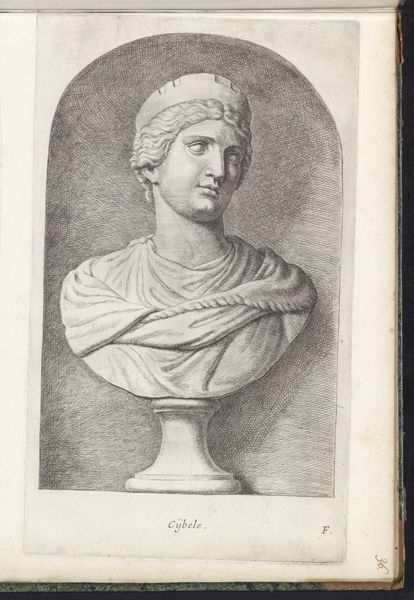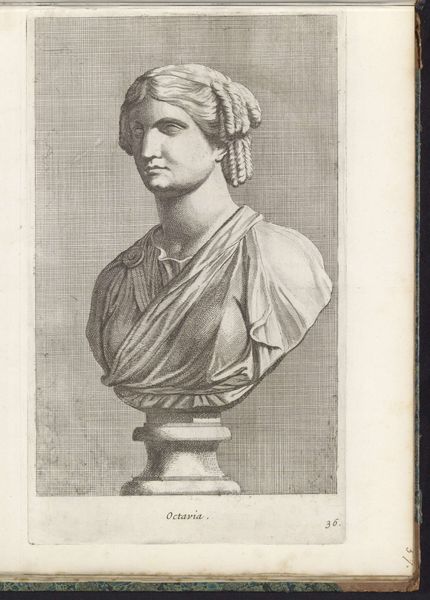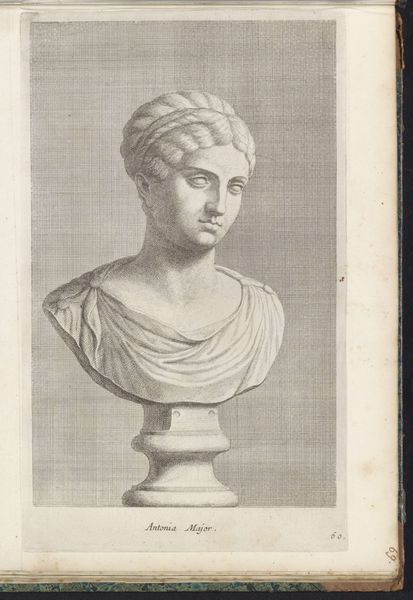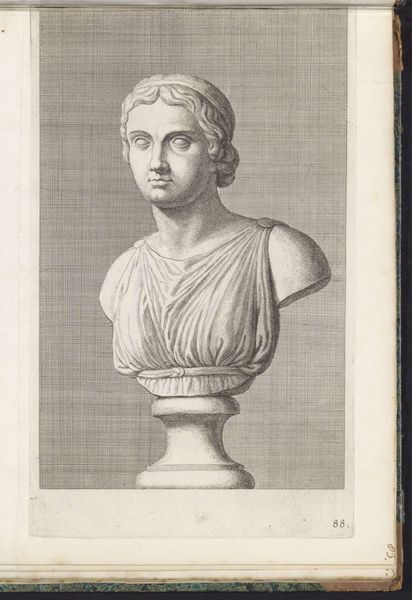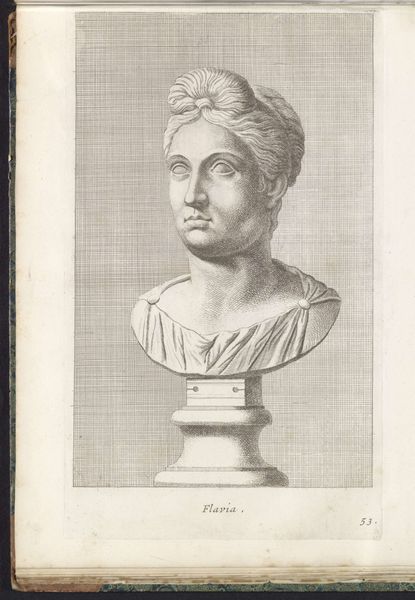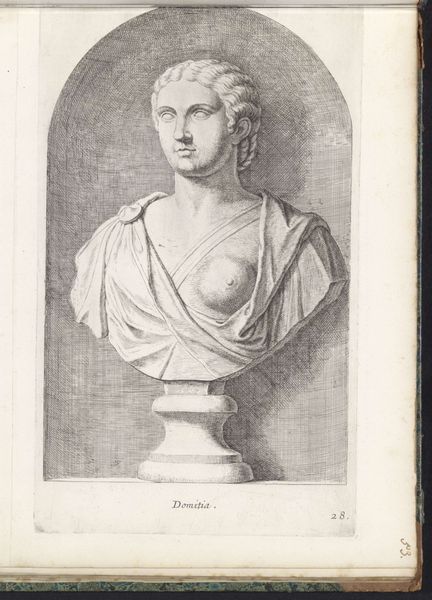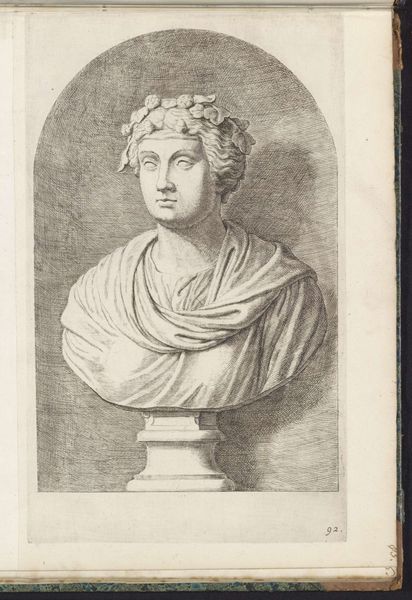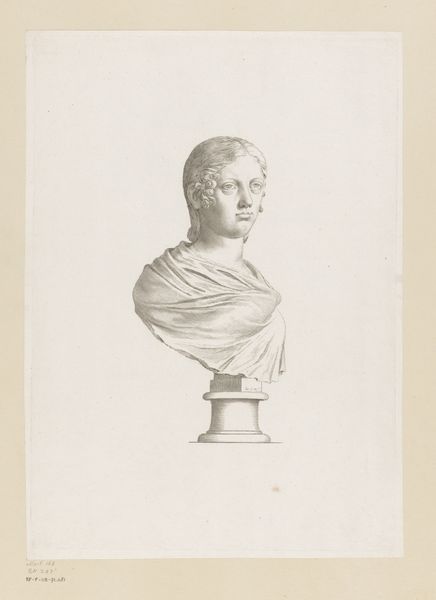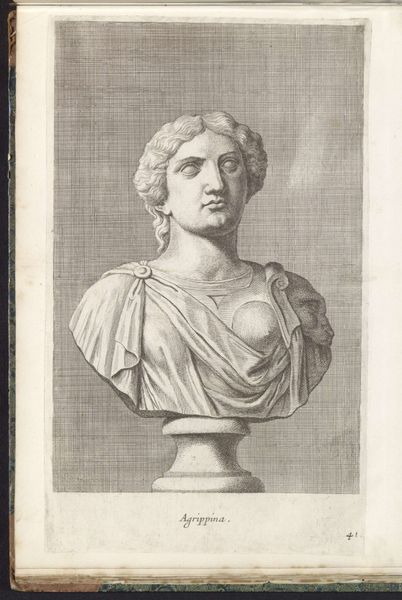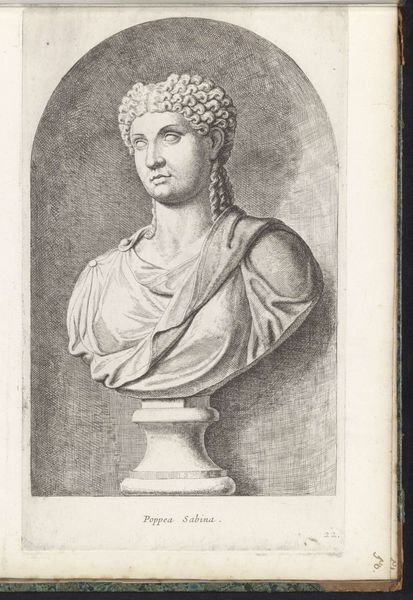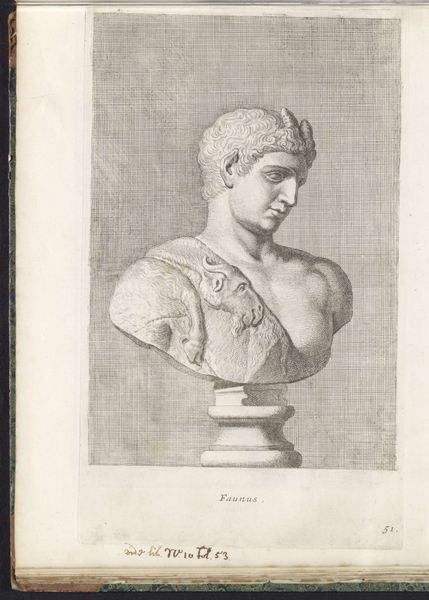
print, metal, engraving
#
portrait
#
pencil drawn
#
baroque
# print
#
metal
#
pencil sketch
#
figuration
#
pencil drawing
#
portrait drawing
#
engraving
Dimensions: height 325 mm, width 193 mm
Copyright: Rijks Museum: Open Domain
Editor: Here we have Hubert Quellinus's "Buste van Terentia," made sometime between 1646 and 1670. It's a print made of metal engraving, currently residing in the Rijksmuseum. There's a subdued elegance about the subject. What catches your eye in this piece? Curator: It's a powerful statement on the male gaze, isn’t it? The female form is depicted as a sculpture. The sculpture in question also adopts features now coded with whiteness; who gets eternalised, and how, through whose eyes? Consider the political context. This print, though seemingly classical and detached, participates in a broader visual language. We need to understand this seemingly simple depiction through intersectional analysis. What is it reproducing and solidifying? Editor: I see your point about how it perpetuates this Western ideal and objectifies women. Does knowing its place in history change the way we can look at and appreciate the technique? Curator: Precisely! We can acknowledge its historical importance and technical skill without excusing the way it reifies a specific image of idealised womanhood that centres European beauty standards and silent objectification. This is vital if we consider who *Terentia* was - an intelligent and historically astute person in her own right. Editor: It’s fascinating to consider that tension – admiring the artistry while being critical of the embedded ideologies. I appreciate your insights. Curator: And I appreciate you bringing your own informed perspectives to this. Recognizing those power structures in art empowers us to engage with it more responsibly.
Comments
No comments
Be the first to comment and join the conversation on the ultimate creative platform.
